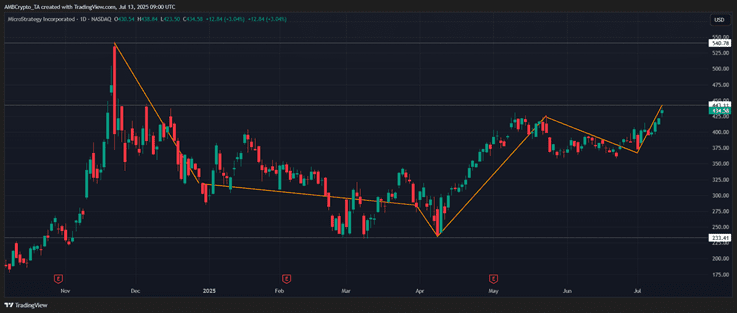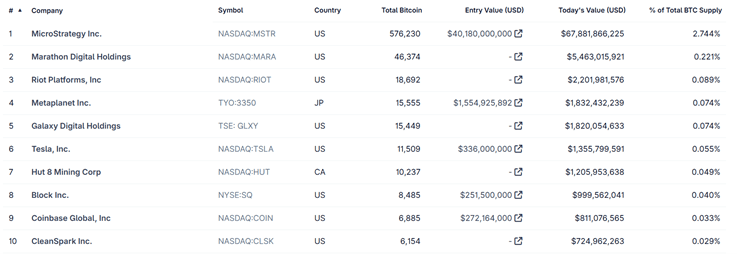When the Bitcoin price reached a new all-time high of $119,914, 100% of holders found themselves in a profitable state, marking the beginning of the full-cycle price discovery phase.
However, the impact is not limited to the blockchain network. Publicly listed companies with exposure to BTC are also trending towards prioritizing risk assets.
Strategy (MSTR) is a typical example. After a sluggish Q1, the company's stock surged 40% in Q2, surpassing the $400 mark. Moving into Q3, MSTR continues to thrive with an 8.5% increase in the very first week candle.

Meanwhile, Bitcoin miners are also benefiting from this upward trend. Marathon Digital Holdings (MARA) has risen 24% from its Q2 closing price of $15.36, almost in line with the 9.4% increase of BTC during the same period.
So what does this show us? Simply put, holding Bitcoin is yielding extremely high profits. Strategy currently holds 597,325 BTC, recording an unrealized profit of over $6 billion and a total value of approximately $70 billion at current prices.
This level of profit is being reflected in MSTR's stock valuation, making the Czech National Bank the center of attention. Recently, the bank added Coinbase shares to its portfolio to expand its capital allocation strategy into the S&P 500 index.
But as Bitcoin continuously hits new highs and Strategy prepares to join this index, could this be a signal that the bank is getting closer to directly purchasing Bitcoin?
The central bank's portfolio is quietly exposed to Bitcoin.
A quiet shift is taking place. Banks have yet to start buying Bitcoin directly, but they are closer than ever. The Czech National Bank is a typical example.
Recently, this bank announced a strategy to allocate part of its foreign reserves into stocks within the S&P 500 index. The goal is to access high-risk assets but with significant potential profits, in order to outperform traditional safe-haven channels like gold.
The bank's recent investments in Tesla and Coinbase are both companies holding large amounts of Bitcoin. Tesla currently owns 11,509 BTC (equivalent to about $1.3 billion), while Coinbase holds 6,885 BTC (about $805 million).

The level of exposure to Bitcoin may soon increase further. Market expectations are rising regarding the possibility of MSTR being added to the S&P 500 index. If that happens, central banks will indirectly increase their exposure to BTC. This is because MSTR has delivered over 40% profit in Q2 – far exceeding the 4.8% increase of gold during the same period.
Simply put, as Bitcoin continues to drive asymmetric profits in the public stock market, it may only be a matter of time before central banks start allocating directly into BTC. The purchase of Coinbase shares may just be the beginning.
